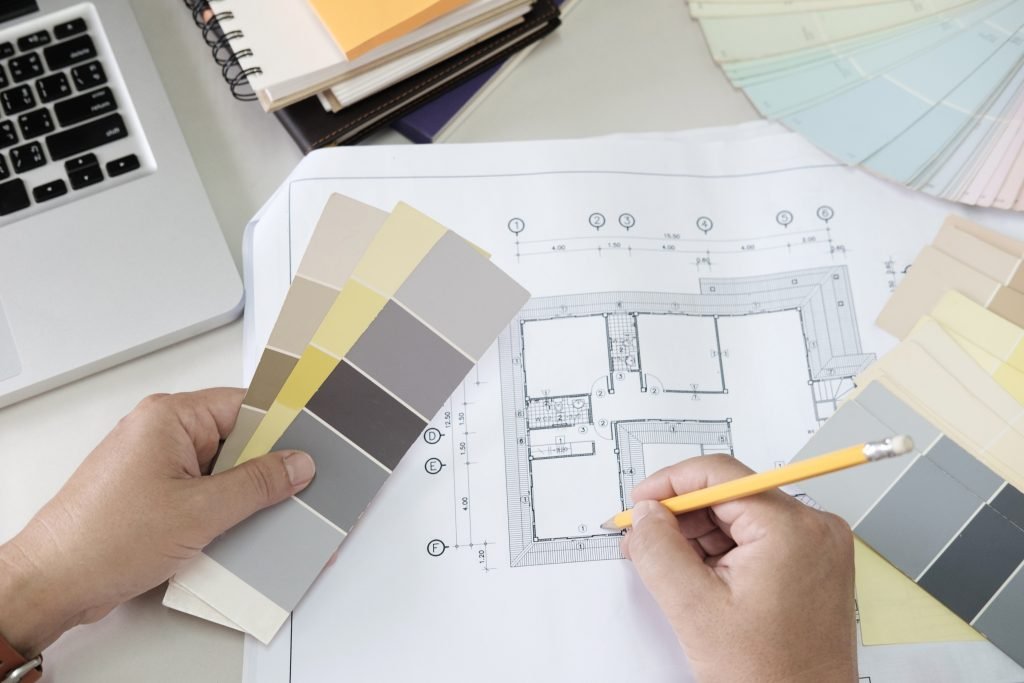INTRODUCTION : Interior Design Career for
Learning.
Interior design is a vibrant and ever-evolving field that combines
creativity, problem-solving, and a keen eye for aesthetics. If you have a
passion for transforming spaces and creating visually stunning environments,
pursuing a career in interior design can be an excellent choice. In this
comprehensive guide, we will debunk common myths, navigate the necessary steps
to succeed in this industry, and explore the limitless possibilities of an
interior design career.
I. Preparing for a Career in Interior Design
Before diving into the exciting world of interior design, it is crucial
to assess your passion, skills, and aspirations. By evaluating your creative
abilities and gaining relevant education and certifications, you will lay a
strong foundation for your future success.
A. Assessing your passion and skills for interior design
Identifying personal design preferences and inspirations allows you to
develop a unique design style. Pay attention to the elements, colors, textures,
and atmospheres that resonate with you. This self-awareness will guide your
creative decisions and help you cater to clients’ needs effectively.
Evaluating your creative and problem-solving abilities is equally
important. Interior design is not only about making spaces visually pleasing,
but also about enhancing functionality and optimizing the use of available
resources. Reflect on your ability to think outside the box, find innovative
solutions, and adapt to various project requirements.
To complement your passion and skills, garnering relevant educational
qualifications and certifications boosts your credibility as an interior
designer. Consider pursuing a degree in interior design career or enrolling in
specialized courses that cover the fundamental principles of design, color
theory, and spatial planning.
B. Building a strong foundational knowledge
To excel in the field of interior design, acquiring a strong
foundational knowledge is essential. Studying the principles of design and
color theory equips you with a framework for creating harmonious and visually
appealing spaces. Understanding how different colors, textures, and patterns
interact not only enhances your design skills but also enables you to
effectively communicate your ideas to clients.
Exploring architectural styles and historical influences allows you to
contextualize your designs and draw inspiration from the rich tapestry of
design history. Familiarizing yourself with different architectural movements
and innovative designers will broaden your design vocabulary and help you
create spaces that reflect your clients’ preferences.
Moreover, in today’s digital age, it is crucial to familiarize yourself
with popular interior design software and tools. Proficiency in software like
AutoCAD, SketchUp, and Adobe Creative Suite can significantly streamline your
design process and enhance your presentation capabilities.
C. Developing a diverse portfolio
A diverse portfolio plays a vital role in attracting potential clients,
employers, and collaborators. Showcasing a range of design projects across
different aesthetics demonstrates your versatility and adaptability as an
interior designer. Include photographs, mood boards, and concept sketches that
effectively capture the essence of each project.
In addition to showcasing your finished projects, emphasize your
technical skills through CAD drawings and mock-ups. Providing evidence of your
ability to translate your ideas into tangible designs will instill confidence
in your potential clients and collaborators.
Moreover, highlight your ability to cater to various client needs and
budgets. Showcase projects that span different scales, from small residential
spaces to larger commercial projects. This demonstrates your flexibility in
working with diverse clients and allows you to connect with a broader audience.
II. Gaining Practical Experience
Gaining practical experience is a crucial step towards launching a
successful interior design career. Seek internships or apprenticeships, assist
established designers, and participate in design competitions and events to
refine your skills and expand your network.
A. Seeking internships or apprenticeships
Research reputable interior design firms and studios that offer
internship opportunities. This hands-on experience allows you to immerse yourself
in the real-world aspects of interior design and gain valuable insights from
experienced professionals. Apply proactively to secure internships and leverage
your networking skills to find apprenticeship opportunities with industry
veterans.
B. Assisting established designers
Collaborating with seasoned professionals is an invaluable way to learn
industry best practices. By assisting established designers, you can observe
their design process, understand how they navigate client interactions, and
gain practical knowledge in areas such as project management and budgeting.
Working on real projects provides a comprehensive and holistic understanding of
the interior design industry.
C. Participating in design competitions and events
Join local design associations or organizations that organize design
competitions and events. Competing in design challenges allows you to showcase
your skills and creativity while receiving valuable feedback from experts in
the field. Attending industry trade shows and conferences provides networking opportunities
and keeps you updated with the latest trends and innovations in the industry.
III. Establishing Your Interior Design Business
Once you have gained substantial experience and honed your skills, you
can consider establishing your own interior design business. Defining your
niche, building a strong brand identity, and cultivating client relationships
are essential steps in this endeavor.
A. Defining your niche and target market
Identify specialized areas of expertise within the broad field of interior
design. Consider whether you want to focus on residential, commercial,
sustainable design, or any other specific niche. Analyze market demand and
competition within your chosen niche to determine if there is a viable market
for your services. Creating a unique value proposition that sets you apart from
competitors is crucial in attracting potential clients.
B. Building a strong brand identity
Craft a memorable business name and design a distinct logo that
effectively represents your brand identity. Your brand should communicate your
design philosophy, values, and the unique qualities that make you stand out.
Develop a professional website and an online portfolio that showcases your work
and provides a seamless browsing experience for potential clients. Utilize
social media platforms to share your design journey, engage with your audience,
and promote your services effectively.
C. Cultivating client relationships and
managing projects
Establish clear communication channels with your clients from the onset.
Thorough initial consultations allow you to understand your clients’ needs,
preferences, and budgetary constraints. Implement efficient project management
strategies to ensure client satisfaction. This includes effective time
management, thorough documentation, and transparent communication throughout
the design process. Regularly update your clients on the progress of their
projects and address any concerns promptly to maintain a positive working
relationship.
IV. Nurturing Your Career Growth
To thrive in the interior design industry, continuous learning,
collaboration with professionals in related fields, and actively engaging with
the design community are key.
A. Continuing education and staying updated
Pursue advanced courses or certifications to enhance your skills and
stay ahead of the curve. Explore specialized areas within interior design, such
as sustainable design, lighting design, or ergonomics. Keep up with industry
trends, new materials, and technologies to provide innovative and cutting-edge
design solutions. Attend workshops and seminars to broaden your knowledge and
network with industry experts and peers.
B. Collaborating with other professionals in
related fields
Establish partnerships with architects, contractors, suppliers, and
other professionals in related fields. Collaborating on projects allows you to
expand your professional network and offer comprehensive design services. By
working closely with professionals from different disciplines, you can leverage
synergies and create cohesive designs that cater to your clients’ diverse
needs.
C. Seeking recognition and becoming a thought leader
Showcase your expertise by speaking at industry events, writing
articles, and participating in design panels or jury positions. Sharing your
knowledge and insights solidifies your credibility as a thought leader in the
interior design community. Actively engage with the design community through
social media, attending design events, and joining professional organizations
to expand your network and stay connected with industry trends.
V. Summary and FAQs
In summary, starting a successful interior design career requires
assessing your passion and skills, building a strong foundation of knowledge,
gaining practical experience, establishing your own business, and nurturing
your career growth. Here are some frequently asked questions to address common
concerns:
* How long does it take to become an interior designer?
The timeline to become an interior designer varies
depending on individual circumstances and educational choices. Pursuing a
degree in interior design typically takes around four years, while specialized
courses or certifications may require a shorter time frame.
* Is it necessary to have a degree to become an interior designer?
While a formal degree in interior design can provide
a comprehensive understanding of the field, it is not the sole path to success.
Gaining practical experience, building a strong portfolio, and continuously
expanding your knowledge and skills are equally valuable in establishing a
flourishing interior design career.
* How can I gain practical experience if I am just starting?
Seeking internships or apprenticeships with reputable
interior design firms, assisting established designers, and participating in
design competitions can provide valuable practical experience to kickstart your
career.
Remember, a career in interior design offers limitless possibilities for
creativity, personal growth, and professional success. By following these
practical steps and investing in continuous learning, you can embark on a
fulfilling journey in the captivating world of interior design.
*The content provided is for
informational purposes only; please consult with a professional before making
any career decisions.












